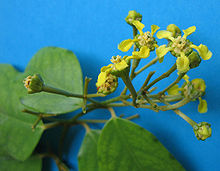
The Clusiaceae or GuttiferaeJuss. (1789) are a family of plants including 13 genera and ca 750 species. Several former members of Clusiacae are now placed in Calophyllaceae and Hypericaceae. They are mostly trees and shrubs, with milky sap and fruits or capsules for seeds. The family is primarily tropical. More so than many plant families, it shows large variation in plant morphology. According to the APG III, this family belongs to the order Malpighiales.
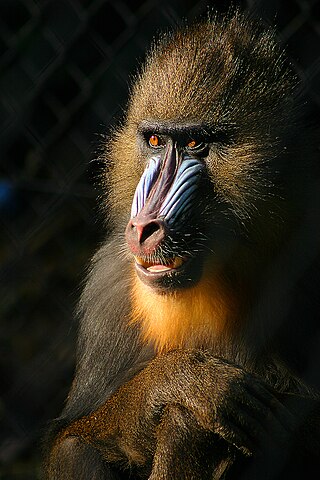
The Cercopithecinae are a subfamily of the Old World monkeys, which comprises roughly 71 species, including the baboons, the macaques, and the vervet monkeys. Most cercopithecine monkeys are limited to sub-Saharan Africa, although the macaques range from the far eastern parts of Asia through northern Africa, as well as on Gibraltar.

Malpighiaceae is a family of flowering plants in the order Malpighiales. It comprises about 73 genera and 1315 species, all of which are native to the tropics and subtropics. About 80% of the genera and 90% of the species occur in the New World and the rest in the Old World.
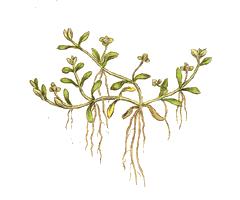
Elatinaceae is a family of flowering plants with ca 35 species in two genera: Elatine and Bergia. The Elatine are mostly aquatic herbs, and the Bergia are subshrubs to shrubs. Elatine species are widely distributed throughout the world from temperate to tropical zones, with its greatest diversity found in temperate zones. Bergia is found in temperate to tropical Eurasia and Africa, with two tropical and one tropical to temperate species in the Americas. The center for biodiversity of Bergia is the Old World tropics, and this is also the center for biodiversity for the family. Neither genus is found in arctic ecosystems.

Peridiscaceae is a family of flowering plants in the order Saxifragales. Four genera comprise this family: Medusandra, Soyauxia, Peridiscus, and Whittonia., with a total of 12 known species. It has a disjunct distribution, with Peridiscus occurring in Venezuela and northern Brazil, Whittonia in Guyana, Medusandra in Cameroon, and Soyauxia in tropical West Africa. Whittonia is possibly extinct, being known from only one specimen collected below Kaieteur Falls in Guyana. In 2006, archeologists attempted to rediscover it, however, it proved unsuccessful.

Archaeoprepona demophon, the one-spotted prepona, banded king shoemaker, or demophon shoemaker is a butterfly belonging to the family Nymphalidae.
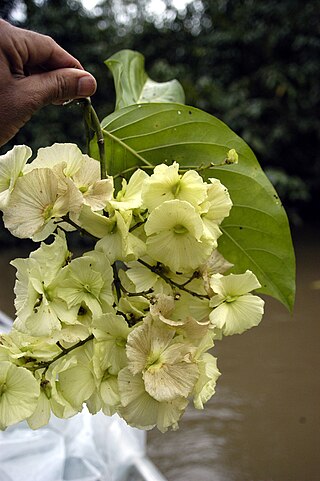
Adelphia is a genus in the Malpighiaceae, a family of about 75 genera of flowering plants in the order Malpighiales. Adelphia comprises four species of woody vines native to the West Indies, Mesoamerica, and western South America.
Malpighiodes is a genus in the Malpighiaceae, a family of about 75 genera of flowering plants in the order Malpighiales. Malpighiodes comprises 4 species of woody vines native to northern South America. They are found in northern Brazil, French Guiana, Guyana, Suriname and Venezuela.
Thryallis is a genus in the family Malpighiaceae, of scandent shrubs and woody vines native to Brazil and adjacent Paraguay and Bolivia.
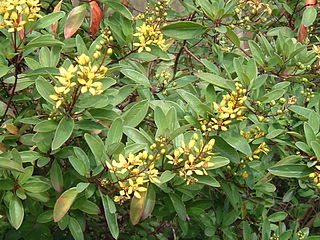
Galphimia is a genus in the Malpighiaceae, a family of about 75 genera of flowering plants in the order Malpighiales; the name is an anagram of Malpighia.Galphimia comprises 26 species of large herbs, shrubs, and treelets. Twenty-two species occur in Mexico, one extending into Texas and one ranging to Nicaragua; four species occur in South America, south of the Amazon Basin. Galphimia gracilis is widely cultivated in warm regions throughout the world. Eight species are distinctive in that the petals become stiff and papery, and persist past the stage of fruit maturation.

Hiraea is a genus in the Malpighiaceae, a family of about 75 genera of flowering plants in the order Malpighiales. Hiraea comprises over 55 species of woody vines and shrubs found in diverse habitats, except very dry vegetation types, in the New World tropics and subtropics from western Mexico to Paraguay and adjacent Argentina and southeastern Brazil; it also occurs in the Lesser Antilles in Grenada and St. Lucia.

Mascagnia is a genus in the Malpighiaceae, a family of about 75 genera of flowering plants in the order Malpighiales. The genus Mascagnia comprises about 45 species that occur in diverse habitats from northern Mexico and the Caribbean to northern Argentina and south-eastern Brazil.
Spachea is a genus in the Malpighiaceae, a family of about 75 genera of flowering plants in the order Malpighiales. Spachea comprises 6 species of shrubs and trees growing in wet forests. One species occurs in Cuba, 2 species in southern Central America with one of those also in adjacent Colombia, and 3 species in northern South America. Spachea correae, native to Costa Rica and Panama, is listed in the IUCN Red List of Threatened Species.

Stigmaphyllon is a genus in the Malpighiaceae, a family of about 75 genera of flowering plants in the order Malpighiales. Amazonvine is a common name for species in this genus.
Diacidia is a genus in the family Malpighiaceae. It comprises 11 species of trees, shrubs, and subshrubs. Ten species are found on the mountains of southern Venezuela and adjacent Brazil; one species is widespread in the drainages of the Rio Negro and the Río Vaupés in Venezuela, Colombia, and Brazil.
Mcvaughia is a genus in the Malpighiaceae, a family of about 75 genera of flowering plants in the order Malpighiales. Mcvaughia contains only one species, Mcvaughia bahiana, a shrub occurring in open shrubby vegetation (caatinga) on sandy soils of lowland Bahia, Brazil. It is related to Burdachia and Glandonia.
Excentradenia is a genus of plants in the family Malpighiaceae. Excentradenia comprises four species of woody vines native to the forests of northern South America.
Cottsia is a genus in the Malpighiaceae, a family of about 75 genera of flowering plants in the order Malpighiales. Cottsia comprises 3 species of slender twining vines native to northern Mexico and extending into Texas, New Mexico, and Arizona. The species of Cottsia were formerly included in Janusia, a genus of South America.

Dicella is a genus of flowering plants in the family Malpighiaceae.
Andersoniodoxa is a small genus of flowering plants in the family Malpighiaceae, native to Costa Rica, Colombia, and northern Brazil. A molecular and morphological study showed that its species, formerly included in Lophanthera, were more closely related to Spachea, requiring a new genus to be erected.
